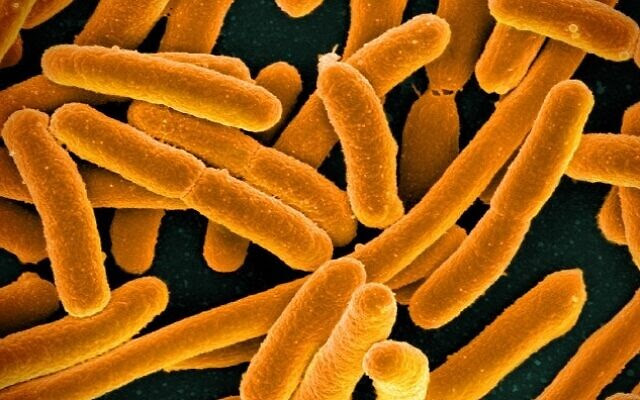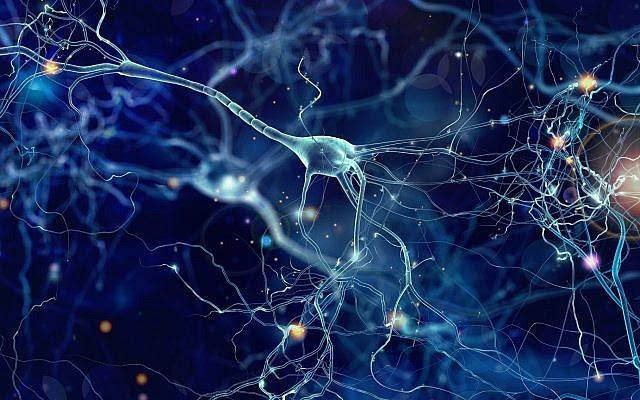

In a Democracy/Republic where the society demands to remain free and tolerates/seeks the exchange of ideas in a free and safe environment there is hope betterment will flourish.
This is the reason progressive radicals do not want these conditions to obtain. This is why the Soros' of the world want to control and or resist conditions that allow for positive change.
This is why the likes of the Holder's, Obama's, Schiff's, Pelosi's Water's, the four renegades and their kind (THE ESTABLISHMENT) need to be flushed out of government along with corrupt bureaucrats that willingly do their bidding.
This is why I post The Rants because the author not only addresses market factors but the underlying social and cultural issues that dictate attitudes and psychology which have a lot to do with market directions and economic conditions.
In his latest Rant he discusses education and the attraction of making under-performers believe racism is their barrier. Yes, there is racism, yes there is prejudice and as long as man populates the earth there will be these negative attitudes but the basic problem relates to broken family structures, the misguided belief rewards not effort is the shovel out of sewer misery. Progressive radicals and their politically correct solutions have increased that which they profess they want to eliminate. I sincerely believe they actually want power and this necessitates growing the uneducated, increasing the numbers who believe they are victims, those who underachieve because of family and cultural issues and an unwillingness and/or incapability of toughing it out. Dependents are more easily manipulated.
Tragically, government and bureaucratic solutions are all too often the enemy.
++++++++++++++++++++++++++++++++++++++++++++++++++++++++++++++++++++++++
Will earth shattering solutions for mankind come from Israeli laboratories? (See 1 ans 1a below.)
++++++++++++++++++++++++++++++++++++++++++++++++++++++++++++++++++++++++
DORIS
+++++++++++++++++++++++++++++++++++++++++++++++++++++++++++++++++++++++
1) In possible climate breakthrough, Israel scientists engineer bacteria to eat CO₂
Decade-long research at Weizmann Institute could pave way for low-emissions production of carbon for use in biofuels, food, and help remove excess global warming CO₂ from air

In a remarkable breakthrough that could pave the way toward carbon-neutral fuels, researchers at the Weizmann Institute of Science have produced a genetically engineered bacteria that can live on carbon dioxide rather than sugar.
The extraordinary leap — reported Wednesday in Cell, and quickly picked up by prestigious publications such as Nature — could lead to the low-emissions production of carbon for use in biofuels or food that would also help to remove excess CO₂ from the atmosphere, where it is helping to drive global warming.
Plants and ocean-living cyanobacteria perform photosynthesis, taking the energy from light to transform CO₂ into a form of organic carbon that can be used to build DNA, proteins and fats.
As these photosynthesizers can be difficult to moderate genetically, the Weizmann team, under Prof. Ron Milo, took E. coli bacteria — more commonly associated with food poisoning — and spent ten years weaning them off sugar and training them to “eat” carbon dioxide instead.
Through genetic engineering, they enabled the bacteria to convert CO₂ into organic carbon, substituting the energy of the sun — a vital ingredient in the photosynthesis process — with a substance called formate, which is also attracting attention as a potential generator of clean electricity.
To get the bacteria to move from a sugar to a carbon dioxide diet, the team, which also included Roee Ben-Nissan, Yinon Bar-On and others in the institute’s Plant and Environmental Sciences Department, then almost starved the bacteria of sugar (glucose), while giving them plenty of carbon dioxide and formate, and bred several generations to test whether evolution would allow some of the bacteria to mutate and be able to survive solely on CO₂.
After a year, some of the bacteria descendants made the complete switch to CO₂, following evolutionary changes in just 11 genes.
The lab bacteria that moved over to a CO₂ diet were fed very high amounts of the gas. However, under regular atmospheric conditions, they would still need sugar, as well, to live.
“Our lab was the first to pursue the idea of changing the diet of a normal heterotroph [one that eats organic substances] to convert it to autotrophism [‘living on air’],” said Milo. “It sounded impossible at first, but it has taught us numerous lessons along the way, and in the end we showed it indeed can be done. Our findings are a significant milestone toward our goal of efficient, green scientific applications.”
1a) Israeli team uses silicon chip to deliver Alzheimer’s-busting protein to brain
In Technion, Bar-Ilan trials, nanochip ferries ‘neural growth factor’ — which combats neurodegenerative diseases — and releases it where needed, overcoming blood-brain barrier

Researchers at the Technion–Israel Institute of Technology and Bar-Ilan University have developed technology they hope will help inhibit the progression of Alzheimer’s disease.
The study was published recently as a cover story in the journal Small. It was led by Prof. Ester Segal and PhD student Michal Rosenberg from the Technion Faculty of Biotechnology and Food Engineering with their partners, Prof. Orit Shefi and PhD student Neta Zilony-Hanin from the Bar-Ilan University Faculty of Engineering.
Alzheimer’s, the most common form of dementia, is a neurodegenerative disease whose symptoms include memory loss, speech impairment, orientation problems, and significant impairment of motor functions.
It primarily strikes the elderly, and among those age 85 and up it reaches a prevalence of some 30%. Due to the increase in life expectancy, the overall incidence of the disease has grown and it is today referred to as the epidemic of the 21st century.
The major cause of the disease is the accumulation of a protein called amyloid beta (Aβ) in brain tissues. The protein blocks and kills nerve cells, also called neurons, in different regions of the brain. This leads, in part, to damage of the “cholinergic mechanisms,” the neurons in charge of brain function.
Research has previously shown that administering a specific protein, called “neural growth factor,” inhibits damage to the cholinergic mechanisms and slows the disease’s progression, said the Technion’s Prof. Segal in a phone interview.
“In people with neurodegenerative diseases, the expression of the neural growth factor protein is reduced,” she said.
The protein is known to have restorative qualities, but the problem is how to get it to the brain, she said.
Delivering the protein to the target area is not a simple task because the brain is shielded by the blood-brain barrier from infiltration by bacteria and harmful substances in the blood.
This protective barrier, however, also restricts the passage of drugs from the bloodstream to the brain, making it difficult for brain-curing medications to get through.
Thus, the neural growth factor proteins, if given in drug form, do not pass through the barrier, and even if they could, they would not live long enough to make the long journey to the brain, Segal said.
Some clinical trials have already started injecting these neural growth factor proteins directly into the brain via a catheter, but the procedure is complicated, invasive and very risky, Segal said.
Now, the Technion and Bar-Ilan University researchers say they have created nanoscale silicon chips that could meet this challenge.
The chips allow the insertion of the curative protein directly into the brain and its release at the targeted tissue.
These chips, developed in Segal’s lab, have a nanoscale porous structure that allows them to be loaded with large amounts of the protein. Through precise control of various features, including the dimension of the chips’ pores and the chemical properties of their surface, the researchers were able to create a silicone structure that retains the protein in its active form and then releases it gradually, over a period of about a month, to the target area in the brain. After releasing the drug, the chips safely degrade in the brain and dissolve, the Technion said in a statement.
With the use of the chips as a vehicle, the protein no longer needs to cross the blood-brain barrier, since the chip is inserted directly into the brain. This is done in one of two possible ways, explained Segal.
The first is by implanting the chip into the brain. Segal admits that this procedure is also invasive, as the skull needs to be drilled into. But, she said, it is less invasive than inserting a catheter, since the chip is not inserted into the brain itself but rather is placed on the outer layer of the brain — the dura mater, a dense connective tissue that surrounds the brain and spinal cord. The researchers aim to eventually be able to load the chip with medication that releases even more gradually, over the period of a year, to prolong the drug’s effect. Currently, in trials with mice, the chip releases the proteins over a period of a month.
The second way to get the proteins to the brain is by using a “gene gun” — a device that has been developed to inject DNA into plant cells in order to transform their genetic structure.
As part of the study, Prof. Shefi of Bar-Ilan reworked the gun, transforming it into “something like a nose spray” that injects the silicon chip with the protein particles into the brain via the nose, bypassing the blood-brain barrier.
The nose has direct pathways to the brain, explained Segal “Not for nothing drug addicts sniff cocaine via their noses,” she said.
This is the first time researchers have successfully used a gene gun to directly deliver particles into a live animal brain, she said.
In a series of experiments, the researchers showed that the two ways of delivering the platform into mice brains “led to the desired result,” said Technion doctoral student Michal Rosenberg. The technology has also been tested on a cellular model of Alzheimer’s disease, where the protein release led to the rescue of the nerve cells, she said.
The team is already conducting pre-clinical studies on animals, at Bar-Ilan , Segal explained, and hopes to expand them to clinical trials if all goes as hoped.
The research was conducted with the support of the Russel Berrie Nanotechnology Institute at the Technion
+++++++++++++++++++++++++++++++++++++++++++++++++++++++++++++++
No comments:
Post a Comment